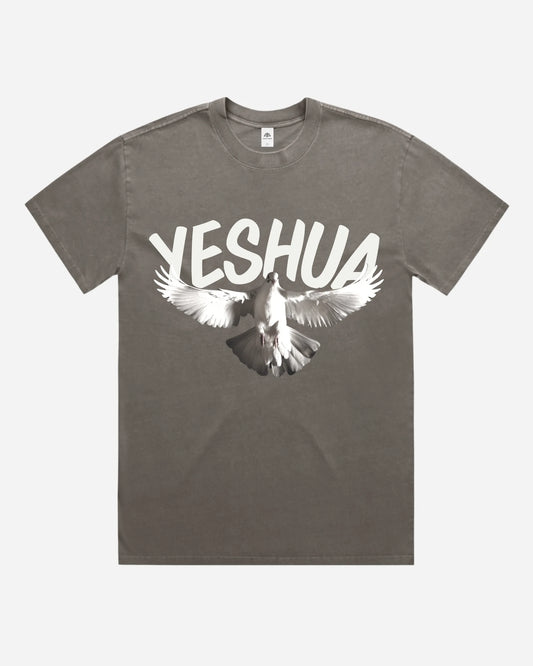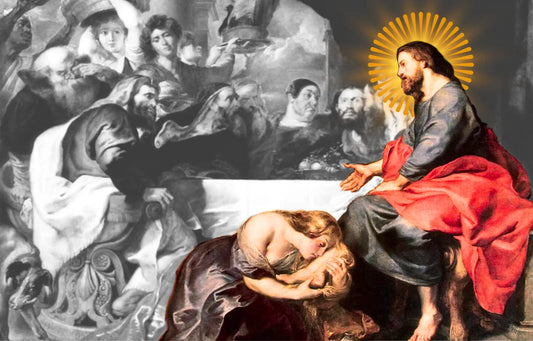Gold in the Bible symbolizes divinity, kingship, purity, and eternal value. It appears over 400 times in Scripture, primarily in the construction of the Tabernacle (Exodus 25–28), Solomon’s Temple (1 Kings 6), and the New Jerusalem (Revelation 21:18). Gold also represents tested faith (1 Peter 1:7). Explore how biblical gold reflects God’s glory, judgment, and covenant relationship with His people.
What Does Gold Symbolize in the Bible?
Divine Glory and Kingship
From Genesis to Revelation, gold marks what is sacred and exalted. Exodus 25:11 describes the Ark of the Covenant overlaid with pure gold—both inside and out—signifying God’s radiant holiness.
Gold is also tied to divine kingship. The Magi present the Christ child with gold in Matthew 2:11, acknowledging Him as king. Throughout the ancient Near East, gold was the metal of monarchs and deities alike (Keel & Uehlinger, Gods, Goddesses, and Images of God in Ancient Israel, 1998).
According to scholar James M. Freeman, “Gold, by its incorruptible nature, became the ideal symbol of what is divine and unchanging” (Manners and Customs of the Bible, 1998).
Eternal Value
Gold reflects value that is not temporal. Unlike silver, which tarnishes, gold does not corrode. In 1 Peter 1:7, faith is compared to “gold refined by fire,” emphasizing its lasting worth after testing. The comparison reinforces that what God values cannot decay. Gold in biblical usage is never arbitrary—it signals what is weighty in both heaven and earth.
Gold in Biblical Worship and Architecture
The Tabernacle and Temple
The worship spaces of Israel were adorned in gold. Exodus 25–40 outlines how gold overlays the Ark, lampstand, altar of incense, and mercy seat. The menorah, a central object of temple ritual, was to be “made of one talent of pure gold” (Exodus 25:39). That’s about 75 pounds (34 kg) of gold—an enormous investment in sacred craftsmanship.
In 1 Kings 6, Solomon’s Temple was lined with gold. The inner sanctuary—housing the Ark—was overlaid with gold from floor to ceiling (1 Kings 6:20–22). Historical estimates suggest over 23 tons of gold were used in temple construction (Clarke, 1993, Biblical Archaeology Review). Archaeological parallels exist in Egyptian and Canaanite shrines (Haran, Temples and Temple-Service in Ancient Israel, 1985).
Sacred Objects and Vestments
High priest garments included gold thread woven into the ephod and breastplate (Exodus 28:6, 15). Even the crown worn by the high priest bore an inscription engraved on a plate of pure gold: “HOLY TO THE LORD” (Exodus 28:36).
These elements emphasize not just beauty, but divine selection and consecration (Meyers, The Tabernacle Menorah, 1976).
Gold and Divine Presence
Golden Thrones and Visionary Imagery
In apocalyptic visions, gold intensifies the grandeur of God’s presence. Revelation 4:4 describes twenty-four elders seated on thrones, crowned with gold. In Daniel 10:5, a heavenly figure is described with a gold belt from Uphaz—likely a poetic reference to brilliance and preciousness (Charlesworth, The Old Testament Pseudepigrapha, 1983).
Ezekiel’s temple vision also features gold detailing, mirroring the heavenly ideal (Ezekiel 41). In every case, gold signals glory that transcends earthly architecture.
The Ark of the Covenant
The Ark, central to Israel’s worship, was built of acacia wood but entirely overlaid with gold. This fusion—wood and gold—symbolized God’s presence among a human people, yet not diminished in holiness.
Biblical scholar Richard M. Davidson (2010) notes: “Gold in the Most Holy Place was not for luxury—it was a visual theology of God's incorruptible presence” (Flame of Yahweh).
Gold in Wisdom Literature and Ethical Teaching
Proverbs and Psalms
Gold frequently appears in wisdom texts as a metaphor for virtue and insight. Proverbs 8:10–11 urges: “Receive instruction rather than silver, and knowledge rather than choice gold. For wisdom is better than rubies.”
Psalms compares God’s word to fine gold: “The law of the Lord is perfect…more to be desired than gold, even much fine gold” (Psalm 19:7–10).
Gold as a Moral Test
The refining of gold becomes a metaphor for divine testing. In Proverbs 17:3, “The crucible is for silver, and the furnace is for gold, but the Lord tests the heart.”
This imagery continued in rabbinic literature and early Christian thought. Origen and Augustine both viewed purification through suffering as a form of “spiritual metallurgy.”
Alchemical texts also described gold as “incorruptible,” a symbol of perfection (Eliade, The Forge and the Crucible, 1962).
Theological Reflections on Gold
Earthly Treasure vs. Heavenly Treasure
Gold is desirable—but Scripture repeatedly warns against worshiping wealth. Matthew 6:19–21 urges believers not to store up treasures on earth “where moth and rust destroy,” but to invest in what is eternal.
The story of the Golden Calf (Exodus 32) is the Bible’s most vivid cautionary tale about gold turned idol. Though meant for adornment, the people fashioned it into a god. This remains a warning for every age (Hoffmeier, Israel in Egypt, 1999).
Scholar Nahum Sarna (1989) explains: “The incident at Sinai illustrates how even the holiest material can be perverted when divorced from God’s purpose” (Exploring Exodus).
Refined by Fire
Peter and Paul both use gold-refining imagery to describe sanctification. 1 Peter 1:7 and 1 Corinthians 3:12–13 speak of faith being tested like gold in a fire, revealing its true quality.
This concept links back to the smelting practices of the ancient world. Goldsmiths heated ore to 1,947°F (1,064°C) to extract pure metal. Spiritually, trial reveals integrity.
The Shekel of the Sanctuary was a gold-weighted currency (Exodus 30:13), showing the intersection of worship and economy (Ben-Dov, Head of All Years, 2008).
Liturgical and Artistic Use of Gold
Christian Art and Worship
In early Christian iconography, gold backgrounds symbolized eternity and divine radiance. Byzantine mosaics featured Christ and the saints against glowing gold tesserae. The 6th-century San Vitale Church in Ravenna remains one of the best examples (Mathews, Byzantium: From Antiquity to the Renaissance, 1998).
By the 9th century, gold leaf was standard in illuminated manuscripts and altar adornments. Its use continued into Gothic and Baroque art, reinforcing visual theology.
Egyptian solar deities like Ra were often depicted in gold, which influenced biblical symbolism while provoking prohibitions against idolatry (Assmann, The Search for God in Ancient Egypt, 2001).
Vestments and Sacred Vessels
Liturgically, gold is used in chalices, patens, and embroidered vestments. The Ceremonial of Bishops allows gold vestments for major feasts, especially Christmas and Easter (No. 346–347).
Golden chalices were in use by the 4th century, symbolizing Christ’s kingship in Eucharistic rites (Jungmann, The Mass of the Roman Rite, 1951).
Thomas Aquinas noted that gold in worship is appropriate “not because God needs it, but because it reflects the reverence owed to Him” (Summa Theologica, III, q. 83).
While some reformers like Zwingli rejected gold in liturgy (Commentary on True and False Religion), Luther retained its use to emphasize Christ’s majesty (Pelikan, The Christian Tradition, Vol. 4).
Quick Biblical References to Gold
Tabernacle & Temple Craftsmanship
- Exodus 25:11 – The Ark of the Covenant was overlaid with pure gold inside and out — showing divine glory and holiness.
- Exodus 25:17–18 – The mercy seat and cherubim were made of pure gold, representing the presence of God.
- Exodus 26:29 – The boards of the tabernacle were overlaid with gold, symbolizing sacredness and value.
- 1 Kings 6:20–22 – Solomon overlaid the entire inner sanctuary of the Temple with pure gold, including the altar — ultimate royal and divine splendor.
Royalty, Wealth & Splendor
- Genesis 2:11–12 – The land of Havilah had good gold, hinting at early prosperity.
- 1 Kings 10:10 – The Queen of Sheba gave Solomon 120 talents of gold, spices, and precious stones — a royal gift of honor.
- 2 Chronicles 9:13–14 – Solomon’s annual gold income was 666 talents, underscoring his vast wealth and kingly majesty.
- Daniel 3:1 – King Nebuchadnezzar makes a golden image — a symbol of prideful human power (and eventual divine smackdown).
Idolatry & False Worship
- Exodus 32:2–4 – Aaron fashions a golden calf from the people’s earrings — a rebellion wrapped in bling.
- Deuteronomy 7:25 – God commands Israel to burn idols made of gold and silver, rejecting their deceptive allure.
- Isaiah 2:20 – On the day of judgment, people will cast away their idols of gold to the moles and bats — gold’s not saving anyone then.
Wisdom, Faith & Spiritual Refinement
- Job 23:10 – “When He has tested me, I shall come forth as gold” — gold as a metaphor for refined, tested faith.
- Proverbs 16:16 – “To get wisdom is better than gold” — spiritual insight surpasses earthly treasure.
- Psalm 19:10 – God’s commands are “more to be desired than gold, yea, than much fine gold” — the soul’s true riches.
What Gold Teaches Us Spiritually
Gold as a biblical color teaches us to recognize what is truly lasting. Its incorruptibility mirrors God's nature. Its refinement through fire reminds us that trials, properly received, can bring about spiritual clarity.
Yet gold also warns. It can be fashioned into idols, hoarded as false security, or chased at the expense of the soul. Scripture calls us to seek the treasure that does not perish.
As Mircea Eliade observed, “Gold in sacred tradition is not just a metal—it is the presence of the transcendent” (The Sacred and the Profane, 1957).
To value gold rightly is to value God supremely. When placed at His service, it glorifies. When placed above Him, it corrupts.














